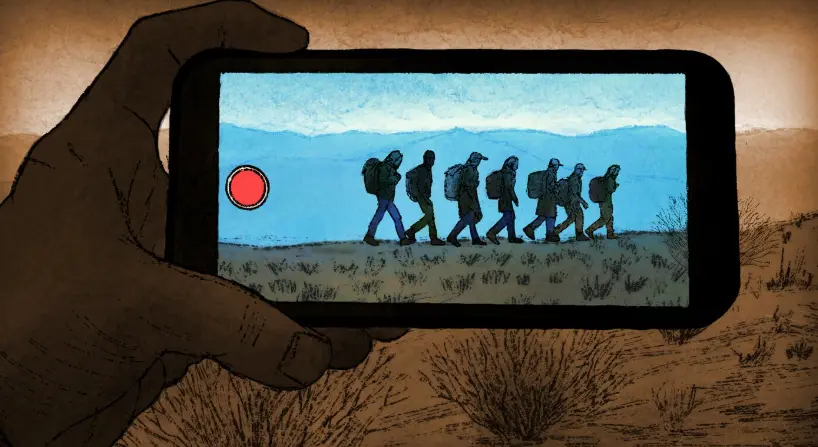In the digital age, social media platforms have become powerful tools for communication, entertainment, and, increasingly, illicit activities. TikTok, known for its short-form videos and vast user base, has emerged as a preferred platform for migrant smugglers to advertise their services, connecting with potential clients and evading law enforcement.
The Rise of TikTok in Smuggling Operations
Traditionally, migrant smuggling relied on word-of-mouth and local networks. However, the advent of social media has transformed these operations. Smugglers now use TikTok to post videos showcasing successful border crossings, transportation methods, and testimonials from migrants who have reached their destinations. These videos often feature emojis, music, and coded language to appeal to viewers and avoid detection. For instance, a smuggler might post a video of migrants crossing the U.S.-Mexico border with captions like “Safe journey to the USA” accompanied by emojis representing travel and success.
One smuggler, operating under the pseudonym “Soary,” began posting such content to attract clients. She shared videos of migrants after crossing the border, assuring viewers of safe passage and building trust with potential customers. These posts often include images of transportation methods like helicopters, boats, or tunnels, emphasizing the variety of options available.
Evading Detection and Building Trust
Smugglers employ various tactics to evade detection on TikTok. They use new accounts, coded language, and private messaging to communicate with clients. Emojis and slang terms help mask the true nature of their services. For example, the use of a baby chicken emoji has become a symbol among smugglers to represent migrants.
To build trust, smugglers post videos of migrants who have successfully crossed borders, often with their faces covered to protect identities. These testimonials serve as endorsements, convincing others of the smuggler’s reliability. In some cases, smugglers openly taunt authorities, posting videos near border walls or referencing political figures to showcase their defiance.
Challenges for Law Enforcement
Authorities face significant challenges in combating this digital smuggling network. While TikTok has policies against human smuggling and reports such content to law enforcement, the sheer volume and adaptability of smugglers make enforcement difficult. Smugglers quickly create new accounts after bans, and the use of encrypted messaging apps like WhatsApp and Telegram further complicates monitoring efforts.
The international nature of these operations adds another layer of complexity. Smugglers operating in one country can easily connect with clients in another, making jurisdiction and coordination among law enforcement agencies challenging. Moreover, the rapid evolution of social media platforms requires constant adaptation from authorities to keep up with new trends and tactics.
Impact on Migrants
For many migrants, TikTok serves as a source of information and hope. Desperate to escape poverty, violence, or persecution, they turn to the platform to find smugglers who promise safe passage to their desired destinations. However, these journeys are fraught with danger. Migrants risk exploitation, abandonment, or death during their travels. Some are scammed by individuals posing as smugglers, losing their savings without any assistance in return.
Despite these risks, the allure of a better life continues to drive migrants to seek out these services. The persuasive nature of TikTok videos, combined with limited legal avenues for migration, leaves many feeling that they have no other choice.
The use of TikTok by migrant smugglers illustrates the evolving landscape of human trafficking in the digital era. As smugglers leverage social media to expand their reach and evade detection, authorities must develop innovative strategies to counteract these operations. This includes enhancing international cooperation, investing in technology to monitor online activity, and addressing the root causes of migration to reduce the demand for smuggling services.
Ultimately, a multifaceted approach that combines enforcement, prevention, and support for migrants is essential to disrupt these illicit networks and protect vulnerable individuals from exploitation.







